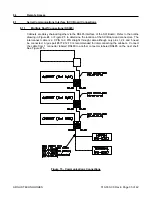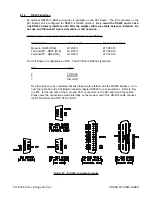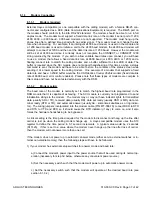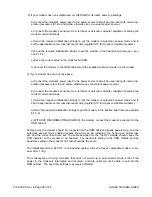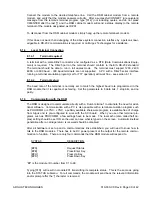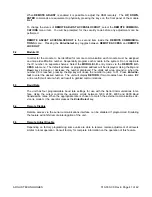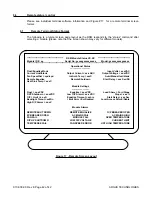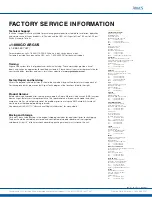
Connect the modem to the desired telephone line. Call the RSM cabinet modem from a remote
modem, and verify that the modem answers correctly. After a successful CONNECT (or equivalent)
message from the remote's terminal program, type '[01s]' (not including quotes, and do not press
CR/ENTER after the last ']') and the RSM cabinet modem will send a status display to the remote
terminal of the module designated as ID #01.
To disconnect from the RSM cabinet modem, simply hang up the remote terminal's modem.
If this does not work, then debugging of the above system connection interface by a person knowl-
edgeable in RS-232 communications is required, or call Argus Technologies for assistance.
8.1.4
Local Terminal Connection
8.1.4.1
Terminal required:
A terminal with a male DB-25 connector and configured as a DTE (Data Communications Equip-
ment) is required. The DB-25 port on the terminal should conform to the EIA RS-232 standard.
The terminal should be able to run in full duplex mode. The terminal must support 1200, 2400,
4800, or 9600 baud - 300 baud terminals are not supported. A PC with a DB-25 serial interface
running a terminal emulation program (set for TTY operation) will work fine - see section 8.1.5.
8.1.4.2
Terminal setup:
The baud rate of the terminal is normally set to match the highest baud rate programmed in the
RSM module that it is capable of achieving. Set the parameters to 8 data bits, 1 stop bits, and no
parity.
8.1.5
Communicating with the RSM
The RSM is designed to communicate directly with a “dumb terminal” to eliminate the need for addi-
tional software. Communication with a PC is also possible with a terminal emulation program such
as PROCOMM or LYNC. LYNC, a publicly available shareware program, is available free of charge
from Argus and is pre-configured to work with the SCI board. When you use other terminal pro-
grams such as PROCOMM, a few settings have to be made. The local echo (also called half du-
plex) setting should be set ON so the user can see what is typed on the screen. Automatic linefeed
generation after a carriage return is received should be disabled.
After all hardware is set up and a communications link established, you will need to know how to
talk to the RSM modules. There has to be DC power present at the output for the remote commu-
nication to function. There are only four commands that the RSM module will respond to.
SYNTAX
DESCRIPTION
[##S]
Request Status
[##E]
Press Enter Key
[##U]
Press Up Key
[##D]
Press Down Key
“##” is the module ID number from 01 to 99.
Typing [01S] will result in module #01 transmitting its complete status. This is the same as going
into the STATUS submenu. For all commands, the module will send back the relevant information
and/or prompt after the ']' character is received.
ARGUS TECHNOLOGIES
010-030-C0 Rev E Page 39 of 42











